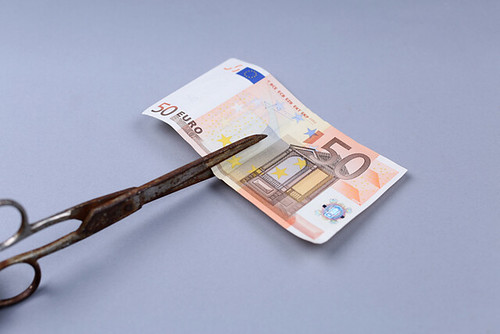By German MEP Engin Eroglu (Renew Europe, Free Voters), a member of the European Parliament’s Committee on Economic and Monetary Affairs
Already before the Covid crisis , the European Central Bank policy had been “pushing on the gas pedal”, with zero interest rates and quantitative easing . With its “pandemic emergency purchase programme” (PEPP) program, which was initiated in Spring 2020, the ECB really pushed the gas to the limit.
According to the newest inflation numbers published by Eurostat last week, the Eurozone’s inflation rate has now reached 3.0 %. This is a level significantly above the ECB’s target inflation of 2%. To defend itself, the ECB claims this to be only “transitionary”. Is this claim justified claim, or is it getting time to “step on the brakes”?
"This week, the Eurozone’s annual inflation rate reached 3%, which marks a 10-year high and is also way above the ECB’s 2% inflation target": https://t.co/ov4vaHTLCC pic.twitter.com/7wpOwIBjfl
— BrusselsReport.EU (@brussels_report) September 2, 2021
Hawks worry that inflation will continue to outstrip expectations and that if the ECB is too slow to respond, it will have to tighten policy suddenly to prevent economic overheating. @MAmdorsky https://t.co/dTzgoB8MrD pic.twitter.com/lJYz2X6U7P
— FT Europe (@ftbrussels) September 6, 2021
At first glance, there’s some merit to the ECB’s view. The Covid crisis did cause a drop in energy prices, leading to some kind of “base effect”. Compared to the low level during the Summer 2020, energy prices rose more than 15 %. Energy accounts for 9.5 % of the inflation rate. Therefore, it has a huge impact on the entire inflation rate.
Additionally, Germany reduced the VAT rate for a period stretching from July until December 2020. This temporary reduction caused another base effect, possibly even driving inflation in the Eurozone’s biggest economy to close to 5 percent, according Bundesbank President Jens Weidmann.
It is plausible that both effects are temporarily, which gives the ECB a good argument to claim inflation levels will go back to “business as usual”.
However, at second glance, there are some strong arguments to back up the case that higher inflation is here to stay.
First of all, the increased price of CO2 emission permits is likely to be a more permanent cost, reflected in energy prices for EU consumers.
Secondly, the Corona crisis demonstrated that globalized supply chains come with additional risks for companies and economies. We might expect reshoring strategies to be implemented both by the private sector and by governments. In any case, this will make products more expensive for customers, and therefore push up inflation.
Thirdly, we are still experiencing the effects of the ECB’s actions from the past. These include an increase in M3 Money Supply of an average annual 4.5 % since 2010, which is clearly above the interest rate and above the rate of economic growth. When it comes to the total assets held by the ECB, the increase is even more dramatic. Since 2010, this has more than quadrupled. The ECB’s low interest rates have led to a boom in the housing and construction market, with shortages of both labour and materials causing prices to increase as well. The increase of these prices typically come with a time lag, and therefore, these prices should continue to increase for some time.
#ECB balance sheet jumps by a whopping €139bn to hit fresh ATH at €8,191.3bn on QE and as Receivables from IMF gained €122.4bn. ECB's total assets now equal to almost 80% of Eurozone's GDP vs Fed's 37%, BoE's 39%, and BoJ's 133%. pic.twitter.com/8BuzpXNrM6
— Holger Zschaepitz (@Schuldensuehner) August 31, 2021
Fourthly, the economy has picked up speed, catching up after a tricky time. High order backlogs and capacity constraints also increase prices.
Fifthly, labour costs might increase for several reasons: Higher minimum wages are a politically possibility in several EU member states and higher wages as a result of collective bargaining agreements, triggered by “transitory” increases in inflation are already on the horizon. In addition to that, the baby boomer generation is retiring, which is reducing labour supply. All of those effects might even cause a wage-price-spiral.
Sixthly, public debt increased during the Covid-crisis, limiting the ECB’s room for manoeuvre in practice.
Last but not least, higher inflation in itself could also become an additional driver. When prices go up, people tend to buy more hard assets, in turn again pushing up inflation. In this sense, inflation is – to a certain extent – a self-fulfilling prophecy.
To sum up: While there are arguments that increased inflation will only be “transitory”, there are clear signs that it could persist. Given the uncertainties of the pandemic, it is understandable that the ECB is not harshly stepping on the breaks. Nevertheless, it might be getting time to slowly lower the pressure on the gas pedal.
"While [Fed & BoE] are preparing to “taper” their asset purchases to reduce them to 0, the @ECB will continue buying bonds with its traditional purchase programme. This is still running at €20bn/m and is expected to be DOUBLED OR TRIPLED when #PEPP ends" https://t.co/PJjinzODeO
— Pieter Cleppe (@pietercleppe) September 6, 2021
On the other side of the Atlantic, the Fed is doing exactly that: Chairman Jerome Powell has announced discussions about a reduction in asset purchases, preparing investors for upcoming decisions.
It is time for the ECB to follow this route.
Disclaimer: www.BrusselsReport.eu will under no circumstance be held legally responsible or liable for the content of any article appearing on the website, as only the author of an article is legally responsible for that, also in accordance with the terms of use.













